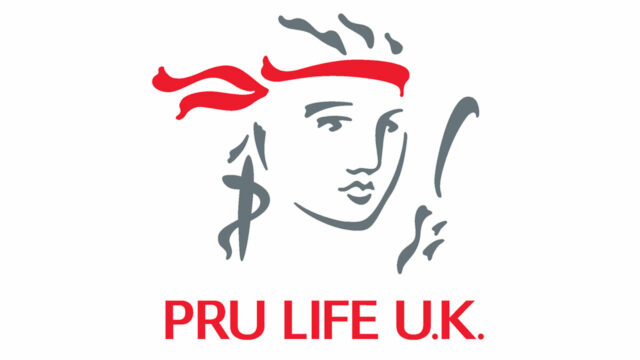I am obese, and have been so for most of my life. In turn, I have also been dealing with a lot of chronic illnesses that go along with being overweight. And now, as I make my way to the Age of 20% Discount, I also realize that perhaps Big Brother should be given some leeway in influencing my food choices. Simply put, I have changed my sentiments about taxing some food.
I used to oppose the sugar tax, or specifically, the tax imposed on sweetened beverages. In the same manner, I had opposed any effort by the State to control or regulate the amount of sugar, salt, and fat that people consume. My contention was that the government should not “regulate,” but “educate” and help people make informed decision about personal nutrition.
My other argument was that bad nutrition was better than malnutrition. And that any type of tax on food will just make food less affordable and less accessible, particularly to the poor. In short, it is better overall if people get to eat even unhealthy food, rather than not eat at all. Tax on food processing inputs like sugar, on top of value-added tax, will just make more food less affordable.
The change of heart comes from the realization that bad nutrition ends up eroding public health in general, perhaps just as bad as malnutrition. In that sense, it may be easier to deal with malnutrition rather than reversing the impact of bad nutrition. As such, I am now more inclined to support some degree of regulation through taxation.
In March, on World Obesity Day, the Department of Health (DoH) sounded the alarm yet again on the rising incidence of obesity in the country. The World Health Organization (WHO), in a statement, noted that the 2021 Expanded National Nutrition Survey showed that 14% of children five to 10 years old, 13% of those aged 10-19 years old, and 40.2% of Filipino adults were overweight and obese.
“Obesity, defined as abnormal or excessive fat accumulation that presents a risk to health, is one side of the double burden of malnutrition. It is a major risk factor for chronic diseases, including cardiovascular diseases such as heart disease and stroke,” the WHO said.
“It will not be feasible to eradicate malnutrition among children under the age of five or to reduce premature mortality from NCDs [noncommunicable diseases] without addressing obesity.”
Dr. Rui Paulo de Jesus, WHO Representative to the Philippines, added, “We must make the healthy choice the easy choice. There is a lot we can do, including restricting the marketing to children of foods high in fat, sugar, and salt, putting in place front-of-pack labeling, and promoting better access to affordable healthy foods. In our local government units, we need to make space for safe walking, cycling, and recreation. These steps we make will help us all to get healthy and stay healthy.”
In 2018, the Congress legislated a tax reform law that also included a tax on sugar-sweetened beverages or SSBs. The aim was to use the P6 per liter excise tax on sugared drinks to reduce their affordability and accessibility. The tax covered sodas, energy drinks, and sweetened teas, among others. The tax was seen as critical public health intervention targeting dietary risk factors.
Reports indicate that surveys conducted by the DoH and researchers revealed a 10-15% reduction in SSB sales within the first year of tax implementation in 2019. This decline was reportedly more pronounced among lower-income or poorer households, who are usually more affected by price increases. The tax seemed to have deterred the consumption of sweet beverages.
To date, there does not seem to be any available study on the full impact of the tax on obesity rates since 2019. It is presumed, however, that there has been a significant reduction in SSB consumption. But I have yet to encounter research or data indicating observable decreases in obesity, the incidence of type 2 diabetes, and dental cavities, or other improved health outcomes resulting from reduced sugar intake.
We have had five years of the SSB tax since 2019. Perhaps by now DoH will have some data on whether the tax on sweet drinks helped improved public health in general, or have resulted in lowering incidences of obesity particularly among children aged five to 10 years old. I believe that consumption of sweet drinks is also a matter of habit that must be curbed as early as possible.
Obviously, parents who indiscriminately consume sweet beverages will feel no particular urgency to curb the habit among their children. So, in addition to the tax, public education also plays a significant role in ensuring the success of the health intervention. Frankly, I am not aware of any public health communication initiative that pushes this agenda.
While the tax is designed to reduce the consumption of sugary drinks, there must be other interventions that encourage healthier food choices. The tax generates revenues, and part of this can be spent on other public health initiatives like information campaigns. The government cannot just rely on tax alone to reduce consumption and improve public health outcomes.
As of 2024, data available online indicates that over 50 countries have implemented some form of SSB tax. These include Mexico, the United Kingdom, South Africa, and several US cities. These countries all aim, in general, to reduce the consumption of sugary drinks, lower obesity rates, and encourage the reformulation of products to reduce sugar content.
Obviously, the tax has led to significant reductions in the consumption of sugary drinks. But there does not seem to be any clear indication as to its impact on obesity. In Mexico, for instance, there are reports that observed only a modest reduction in obesity prevalence. In short, the SSB tax contributes to reducing sugar intake, but their impact on obesity may be limited unless they are part of a broader set of public health interventions.
In this line, overall diet quality, physical activity levels, and the availability of alternative healthy food options play a significant role in determining the overall impact on obesity rates. The tax’s impact should also indicate lower rates of type 2 diabetes, cardiovascular diseases, and dental issues. Perhaps it is time that DoH go beyond the tax and consider other interventions to reduce obesity.
Marvin Tort is a former managing editor of BusinessWorld, and a former chairman of the Philippine Press Council
matort@yahoo.com












